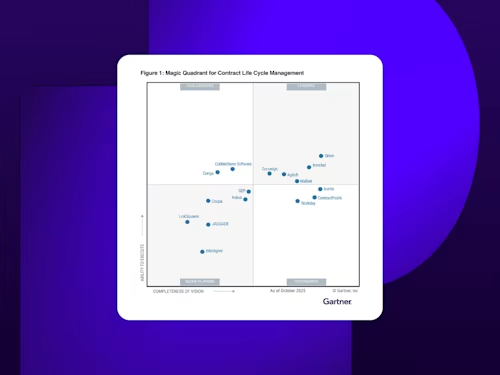
Top 5 Digital Healthcare Trends to Watch in 2024
Curious about what’s next in healthcare? Explore 2024’s top five digital healthcare trends and stay informed on the future of healthcare innovation.
- 1. Staff shortages have increased since the pandemic
- 2. More providers want to improve operational and cost efficiencies
- 3. Digitization can improve access to healthcare data
- 4. AI usage in healthcare is driving digital transformation
- 5. Medical data breaches require investments in cybersecurity
- The future of healthcare is digital
Table of contents
- 1. Staff shortages have increased since the pandemic
- 2. More providers want to improve operational and cost efficiencies
- 3. Digitization can improve access to healthcare data
- 4. AI usage in healthcare is driving digital transformation
- 5. Medical data breaches require investments in cybersecurity
- The future of healthcare is digital

Healthcare providers using outdated systems to send and receive documents are running into challenges that limit their ability to provide care to their patients. Broader industry trends like growing patient volume, an aging population and staffing shortages point to the need to digitize healthcare documentation as a means of improving the patient journey and simplifying provider experience.
Previous eras of healthcare technology forced providers to endure endless paperwork, manual record-keeping and time-consuming administrative tasks. Today’s healthcare providers, particularly those dealing with high patient volumes, recognize the need for a more streamlined, efficient and patient-centered approach.
In this post, we’ll explore five healthcare trends shaping the industry today. For each one, we’ll discuss how technology can solve current problems with purpose-built solutions.
1. Staff shortages have increased since the pandemic
As of October 2023, the United States faced a healthcare worker shortage of more than 17,000 primary care physicians, 12,000 dental care practitioners and 8,000 mental health practitioners. Without appropriate numbers of these trained professionals, the healthcare system can easily be overwhelmed.
A HealthDay and Harris Poll survey found that 35% of people have felt the effects of staffing shortages in the industry. While 84% of U.S. adults have tried to get medical care, 73% experienced delays and challenges.
The shortages impact health professionals too. With increasing workloads and no new coworkers to help ease the burden, stress and burnout are serious risks. This situation will worsen as more health professionals quit due to burnout and inflexible workplace policies. Those issues have become increasingly important since the first COVID-19 lockdown in 2020.
One way to mitigate the harm of these factors is to implement policies that will improve employee experience through digitization. For instance, interoperable EHR systems can improve the provider experience. Digital hiring systems can simplify the recruitment and onboarding process for new hires. In both cases, using an e-signature workflow can reduce paperwork and associated labor costs.
2. More providers want to improve operational and cost efficiencies
As of 2020, one in six Americans (54 million) were over 65. That number is expected to grow to 74 million by 2023. That aging population means patient volume will rise, especially those with chronic diseases. This problem requires more workers who specialize in elder care and newer, more efficient systems to handle this inflow.
With inflation complicating the picture even further, outdated legacy systems will slow down the healthcare industry and prevent people from getting timely access to care. Last year, inflation was at its highest in 40 years, leading to cost-based behavior modifications on healthcare services. 28% of healthcare consumers feel less prepared to handle emergencies. Additionally, consumers are trying to minimize costs by avoiding routine checkups, which could worsen their health issues, burdening them and the institutions they seek help from.
As patient volumes increase, the demand for sophisticated infrastructure also increases. This is why it’s critical for healthcare institutions to invest in solutions that improve care coordination and reduce operational costs. For example, e-signature solutions can simplify patient intake by reducing paperwork for patients and administrative staff. Over 40% of employees spend more than five hours a week faxing, printing and scanning documents. A digitized agreement system increases efficiency and reduces labor and hard costs drastically.
3. Digitization can improve access to healthcare data
Personalized healthcare can improve patient outcomes, improve provider-patient relationships and reduce healthcare costs. But it needs one thing: data.
For patient-centered care delivery, providers need access to granular data points to make informed decisions. Tools like wearable devices can collect data and provide information directly to healthcare providers, which explains why the market is expected to be valued at $5.8 billion by 2031. It also decreases the cost of care because patients don’t have to visit the hospital since treatment can often be delivered through remote services.
If you want to improve patient outcomes, you need to improve the collection and accessibility of patient data. When possible, providers need to find ways to include more information in patients’ medical histories so practitioners can get a more holistic view of their health. By establishing a digital connection to more data sources, providers can monitor progress less invasively and make better recommendations.
Unfortunately, many modern practices still rely on manual, disconnected systems, which slows down the decision-making process and damages the patient’s experience. It’s time for medical providers to take advantage of robust API connectivity solutions to build a backend system that consolidates data from many sources into a single platform. Even the 21st Century Cures Act emphasized the need for such systems. By investing in solutions that promise to centralize patient records, healthcare providers can streamline data retrieval and eliminate the inefficiencies of paper-based systems.
4. AI usage in healthcare is driving digital transformation
Artificial intelligence (AI) has penetrated almost every industry—and healthcare is no exception. Many friction points in the current healthcare system make it difficult for patients and providers to access and deliver care.
There’s a significant gap between what services consumers get and what they expect. It shows that a lot still needs to be done to improve the patient experience. Here are a few examples of issues plaguing the system:
Long diagnostic periods leading to deteriorating illnesses
Manual medical billing and coding processes
Lack of prioritization frameworks for claims processes
Inefficient patient intake and engagement process
However, these issues can be resolved with technologies like AI. For example, systems that automatically convert physician notes into medical codes can streamline the billing process. Diagnostic software can predict and identify diseases or disorders based on clinical results.
There’s also a risk contained in these new AI systems: bias from training data. Choose AI solutions that are trained thoroughly, have a high degree of accuracy and are secured with industry-standard encryption.
5. Medical data breaches require investments in cybersecurity
In September 2023, Nuance Communications, a healthcare software provider, notified over 1.2 million people that their data had been compromised. It included sensitive information that could put individuals at risk, such as medical insurance numbers, diagnoses and medications. In eth same year, healthcare provider HCA Healthcare reported that over 11 million records had been breached.
Unfortunately, such breaches are not uncommon and their frequency is increasing each year. One reason why this happens is because organizations push to digitize healthcare data without understanding the proper security measures to put in place.
If you’re using integrated or interoperable systems, it’s essential to understand:
How these systems are secured
Potential points of data leakage
Level of compliance with regulatory standards
While HIPAA compliance is mandatory, other standards (such as PCI DSS and HHS 405(d)) are also required. Increasing investments in software that helps you maintain compliance is key.
The future of healthcare is digital
It’s evident that despite the healthcare industry’s reliance on paper-based legacy systems, digitization will continue to transform the entire system. As patients and providers demand more efficient systems that save time and costs, healthcare teams must embrace digital systems and scale them quickly.
It’s also important to take stock of the new challenges posed by these solutions. For instance, technological adoption and data encryption are the biggest roadblocks that prevent organizations from going all in with digitization. If you’re interested in digitizing healthcare data at your organization, spend time understanding how these products work within your internal systems to make the most of your investment.
Learn more about Docusign solutions for healthcare and get started on your digital transformation journey today.
Related posts
Docusign IAM is the agreement platform your business needs


